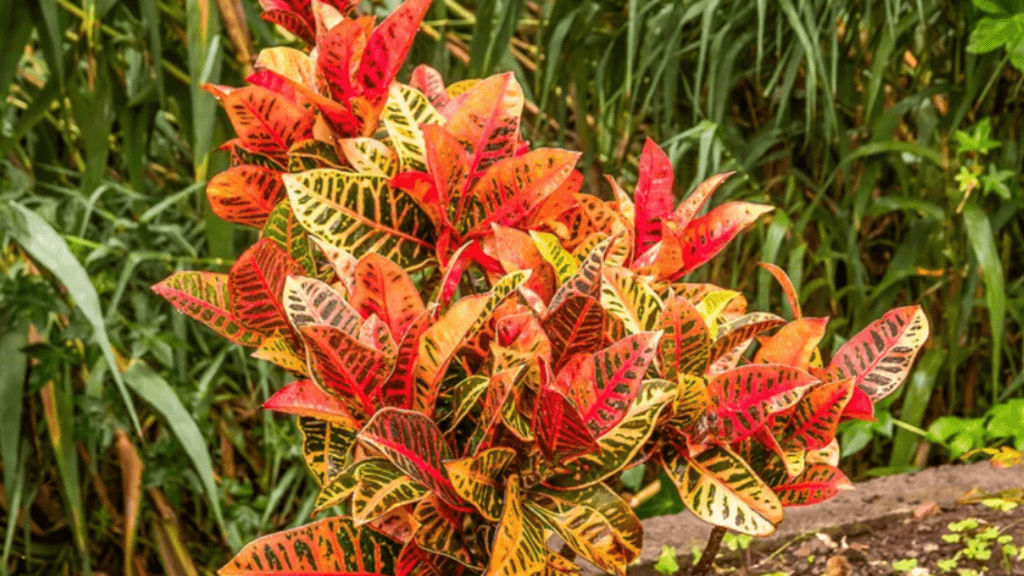
The Ultimate Guide to Croton Plant Care for Beginners
Caring for your croton plants doesn’t have to be daunting, especially for beginners. With the right knowledge and guidance, you can easily care for and nurture your croton plants to ensure they thrive and flourish. This ultimate guide will walk you through all the essential aspects of croton plant care, from watering and sunlight requirements to pest control and propagation. By following these simple and effective tips, you can say goodbye to the stress of caring for your croton plants and hello to a beautiful and thriving indoor garden. Don’t let inexperience hold you back – with the right care and attention, your croton plants can become the envy of all your friends. So let’s dive in and learn how to care for your croton plants like a pro!
Table of Contents
ToggleUnderstanding the Croton Plant
Description and botanical name
The croton plant, scientifically known as Codiaeum variegatum, is a stunning and vibrant foliage plant that is perfect for adding a pop of color to any indoor or outdoor space. With its glossy, leathery leaves that come in a range of colors and patterns, the croton plant is a popular choice for plant enthusiasts looking to add visual interest to their plant collection.
The croton plant is native to Indonesia, Malaysia, and the western Pacific islands, where it thrives in warm, humid climates. In the United States, it is commonly grown as a houseplant or as a colorful addition to outdoor gardens in warmer regions.
Known for its striking and bold foliage, the croton plant is a great way to add a tropical touch to your home or garden. With its unique leaf shapes and vibrant colors, it’s no wonder that the croton plant is a favorite among plant lovers.
When it comes to caring for your croton plant, providing the right amount of sunlight, water, and humidity is key to ensuring its health and vitality. With the proper care and attention, your croton plant can thrive and bring joy to your home for years to come. So, embrace the challenge of caring for your croton plant and watch it grow into a beautiful and vibrant addition to your plant collection.
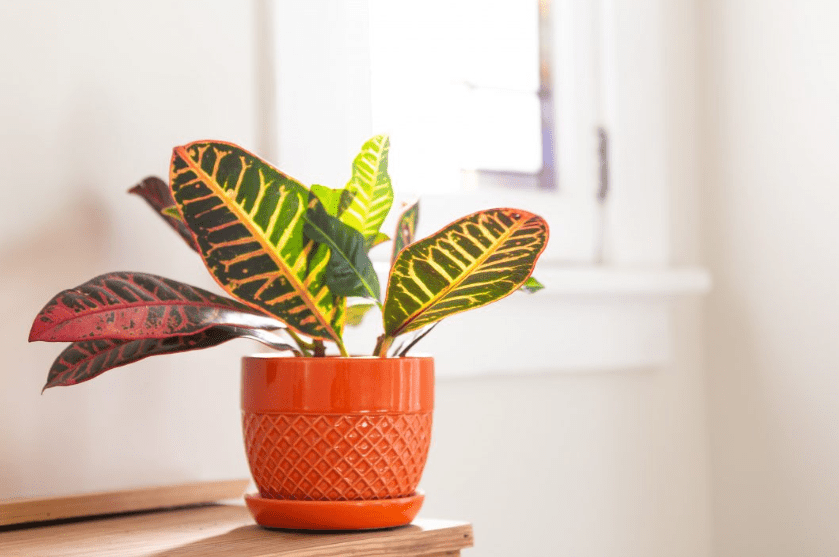
Origin and history
The croton plant has a rich history and origin that dates back to Indonesia, Malaysia, and the western Pacific islands. Its vibrant and striking foliage has made it a popular choice for both indoor and outdoor gardens. The plant has a tropical feel to it and adds a touch of color and vibrancy to any space it inhabits. Given the right care and attention, the croton plant can thrive and bring joy to your home for years to come. Its unique leaf shapes and bold colors make it a favorite among plant enthusiasts. Embrace the challenge of caring for your croton plant and watch it grow into a beautiful and vibrant addition to your plant collection. With proper care, the croton plant can become a staple in your home or garden, adding a touch of tropical beauty to your surroundings.
Unique characteristics and appearance
The croton plant is truly one-of-a-kind with its vibrant and bold foliage that adds a pop of color to any space. Its unique leaf shapes and striking colors make it a standout choice for both indoor and outdoor gardens. The croton plant has a rich history and origin that dates back to Indonesia, Malaysia, and the western Pacific islands. Its tropical feel and stunning appearance have made it a popular choice for plant enthusiasts around the world.
Embracing the challenge of caring for a croton plant is a rewarding experience. With the right care and attention, it can thrive and bring joy to your home for years to come. Its unique characteristics and appearance make it a beautiful and vibrant addition to any plant collection.
So, why settle for ordinary when you can have something truly extraordinary? Add a croton plant to your collection and embrace the challenge of caring for this stunning and unique plant. You won’t regret it!
Benefits of Growing Croton Plants
Aesthetic appeal with colorful foliage
Croton plants are truly a sight to behold with their vibrant and colorful foliage. The unique patterns and colors of the leaves make them a stunning addition to any indoor or outdoor space. Imagine the aesthetic appeal that these plants can bring to your home or garden! Their tropical feel and stunning appearance have made them a popular choice for plant enthusiasts around the world. Embracing the challenge of caring for a croton plant is a rewarding experience. With the right care and attention, it can thrive and bring joy to your home for years to come. So, why settle for ordinary when you can have something truly extraordinary? Add a croton plant to your collection and enjoy the beautiful aesthetic appeal it brings. You won’t regret it!
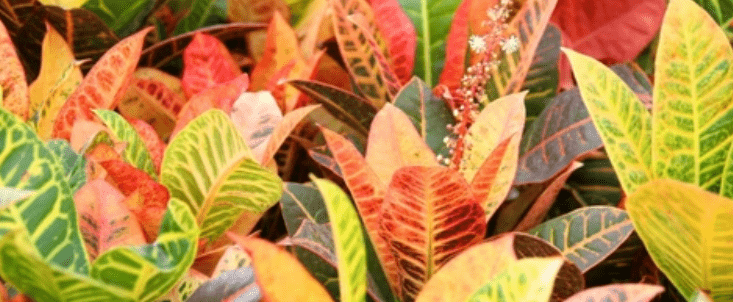
Air purification qualities
The air purification qualities of croton plants are simply incredible. These plants have the ability to remove harmful toxins from the air, creating a cleaner and healthier environment for you and your family. Not only are croton plants visually stunning, but they also serve a practical purpose by purifying the air in your home. With pollution and indoor toxins becoming a growing concern, having a croton plant in your home is a simple and effective way to improve air quality. Why settle for an air purifier when you can have a beautiful and natural solution with a croton plant? Embrace the challenge of caring for a croton plant and reap the benefits of cleaner, fresher air in your home. It’s a win-win situation!
Low-maintenance indoor and outdoor plant
Croton plants are the perfect choice for anyone looking for a low-maintenance indoor and outdoor plant. These vibrant and colorful plants require minimal care, making them an ideal option for those with a busy lifestyle. Croton plants are drought-tolerant and can thrive in a variety of conditions, making them a versatile and easy addition to any indoor or outdoor space.
Not only are croton plants visually stunning, but they also have air purification qualities that make them a valuable addition to any home. These plants have the ability to remove harmful toxins from the air, creating a cleaner and healthier environment for you and your family. With pollution and indoor toxins becoming a growing concern, having a croton plant in your home is a simple and effective way to improve air quality.
Embracing the challenge of caring for a croton plant is well worth it, as the benefits of cleaner, fresher air in your home are truly invaluable. Why settle for an air purifier when you can have a beautiful and natural solution with a croton plant? So, set a goal to incorporate low-maintenance indoor and outdoor plants like croton into your living space, and enjoy the beauty and health benefits they bring to your environment.
Types of Croton Plants
Common varieties and species
There are many different types of croton plants, each with its own unique characteristics and beauty. Some common varieties include the Petra, Mammy, and Zanzibar croton. The Petra croton is known for its vibrant and colorful foliage, with shades of red, orange, and purple. The Mammy croton features bold, dark green leaves with bright red veins, creating a striking and eye-catching appearance. The Zanzibar croton is beloved for its multi-colored leaves, with a mix of green, yellow, and red hues that add a lively touch to any space. With so many different options to choose from, you can find a croton plant that suits your personal style and preferences. Whether you prefer bold and vibrant colors or more subtle and elegant foliage, there is a croton variety for everyone. Adding a croton plant to your home or garden is a great way to bring a pop of color and visual interest to your surroundings. Plus, with their air-purifying qualities, croton plants are not only beautiful but also beneficial for your overall health and well-being. So, don’t hesitate to explore the different varieties of croton plants and find the perfect one to enhance your living space.
Differences and similarities among types
When it comes to croton plants, there are numerous varieties to choose from, each with its own unique characteristics. The Mammy croton and the Zanzibar croton are just two examples of the stunning diversity within this plant family. The Mammy croton is known for its bold, dark green leaves with striking red veins, creating a dramatic and eye-catching appearance. On the other hand, the Zanzibar croton is beloved for its multi-colored leaves, featuring a mix of green, yellow, and red hues that add a lively and vibrant touch to any space. Despite their differences, both varieties share the same air-purifying qualities, making them a beneficial addition to any home or garden. Whether you prefer the bold and vibrant colors of the Mammy croton or the more subtle and elegant foliage of the Zanzibar croton, there is a croton variety to suit everyone’s personal style and preferences. With so many options to choose from, adding a croton plant to your living space is a fantastic way to bring a pop of color and visual interest to your surroundings. So, don’t hesitate to explore the various types of croton plants and find the perfect one to enhance your home or garden.
Best climates and zones for each variety
Croton plants are a wonderful addition to any garden or home, and the best climates and zones for each variety depend on their specific needs. The Mammy croton, with its bold dark green leaves and striking red veins, thrives in warm and humid climates, making it ideal for tropical and subtropical regions. On the other hand, the Zanzibar croton, with its multi-colored foliage, is more adaptable and can thrive in a wider range of climates, including both tropical and temperate regions.
When choosing a croton variety for your garden or home, it’s important to consider the specific climate and conditions of your area to ensure that the plant will thrive and flourish. With the right care and attention, croton plants can add a burst of color and vibrancy to any space, so take the time to research and select the best variety for your specific climate and zone. By doing so, you’ll be able to enjoy the beauty and benefits of these stunning plants for years to come.
How to Grow Croton Plants
Choosing the right location (light and temperature requirements)
When it comes to growing croton plants, choosing the right location is crucial for their success. These plants thrive in bright, indirect light, so it’s important to place them in a spot where they can receive plenty of sunlight without being exposed to direct rays. In terms of temperature, croton plants prefer warm and humid conditions, so it’s best to keep them in a location where the temperature doesn’t drop too low. This could be a challenge in cooler climates, but with the right care and attention, croton plants can still thrive in these conditions. By understanding the light and temperature requirements of croton plants and choosing the right location for them, you’ll be able to enjoy their beautiful foliage and vibrant colors in your home or garden. Don’t let the specific needs of croton plants deter you from growing them – with the right knowledge and care, you can create the perfect environment for these stunning plants to flourish.
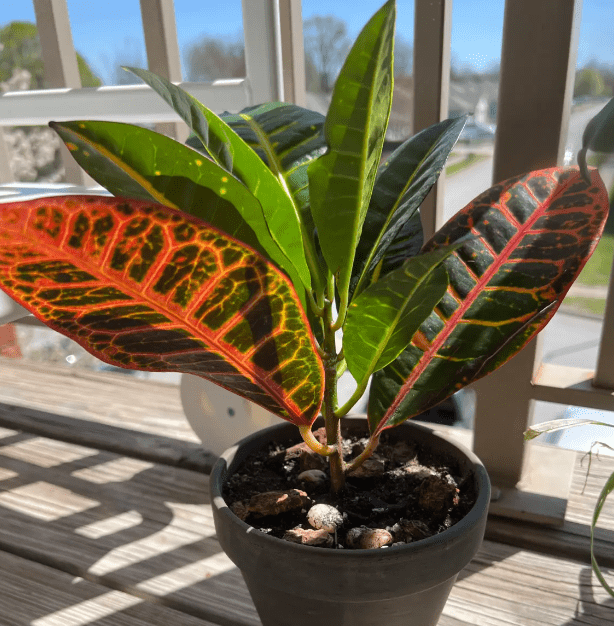
Soil requirements and preparation
Are essential for the successful growth of croton plants. These plants thrive in well-drained, fertile soil that is rich in organic matter. It’s important to prepare the soil before planting by mixing in compost or well-rotted manure to improve its texture and nutrient content. Additionally, adding perlite or sand can help to improve drainage and prevent waterlogging, which can be detrimental to the health of croton plants. It’s also important to ensure that the soil has a slightly acidic to neutral pH level, as croton plants prefer soil that is not too alkaline. By taking the time to prepare the soil properly and provide the right conditions for croton plants, you can create an environment that promotes healthy growth and vibrant foliage. With the right soil requirements and preparation, you can enjoy the beauty of these stunning plants for years to come. Don’t underestimate the importance of soil preparation – it’s a crucial step in ensuring the success of your croton plants.
Step-by-step planting guide (potting, repotting, and soil mix)
When it comes to planting croton plants, it’s important to follow a step-by-step guide to ensure their success. First, you’ll want to choose a pot that is the right size for your plant and has drainage holes to prevent waterlogging. Next, fill the pot with a well-draining, fertile soil mix that is rich in organic matter. You can add compost or well-rotted manure to improve the texture and nutrient content of the soil. It’s also beneficial to add perlite or sand to further improve drainage.
When planting or repotting your croton plants, be sure to gently remove them from their current container and carefully loosen the roots before placing them in the new pot. Position the plant in the center of the pot and fill in the gaps with soil, pressing it down gently to secure the plant in place.
After planting, it’s important to water the croton plant thoroughly and place it in a location that receives bright, indirect sunlight. Regularly check the moisture level of the soil and water as needed to keep it consistently moist, but not waterlogged.
By following this step-by-step planting guide and providing the right soil mix, you can ensure the health and vibrancy of your croton plants. With proper care and attention, you’ll be able to enjoy the beauty of these stunning plants for years to come. So, take the time to prepare the soil properly and give your croton plants the best possible growing conditions. Your efforts will be rewarded with healthy, thriving plants that bring joy and beauty to your home.
Comprehensive Croton Plant Care Guide
Watering guidelines (frequency and method)
When it comes to watering your croton plant, it’s important to follow the proper guidelines to ensure its health and vibrancy. After planting, be sure to water the plant thoroughly and place it in a location with bright, indirect sunlight. Check the moisture level of the soil regularly and water as needed to keep it consistently moist, but not waterlogged. It’s crucial to provide the right amount of water for your croton plant to thrive. By following these watering guidelines, you can ensure that your plant receives the proper care it needs to flourish. Don’t underestimate the importance of proper watering – it’s a key factor in the success of your croton plant. So take the time to water your plant correctly and enjoy the beauty of a healthy, vibrant croton plant in your home.
Fertilization tips (types of fertilizer, schedule)
Fertilizing your croton plant is essential for its growth and health. There are different types of fertilizers you can use, such as a balanced liquid fertilizer or a slow-release granular fertilizer. It’s important to choose a fertilizer that is specifically formulated for indoor plants. When it comes to scheduling, you should fertilize your croton plant about once a month during the growing season, which is typically from spring to early fall. Be sure to follow the instructions on the fertilizer label and avoid over-fertilizing, as this can cause damage to your plant. By providing the right type of fertilizer and following a regular schedule, you can ensure that your croton plant receives the nutrients it needs to thrive and display its stunning, colorful foliage. Your efforts in fertilizing your plant will be rewarded with healthy, vibrant growth and a beautiful addition to your indoor space. So remember to fertilize your croton plant regularly and watch it flourish before your eyes.
Pruning and shaping techniques
Are essential for maintaining the health and appearance of your plants. By regularly pruning and shaping your plants, you can encourage healthy growth and control their size and shape. When it comes to pruning, it’s important to remove any dead, damaged, or diseased branches to promote new growth and prevent the spread of disease. You can also prune to shape your plants and remove any overgrown or unruly branches. By shaping your plants, you can create a more visually appealing and balanced appearance. It’s important to use sharp, clean pruning shears to make clean cuts and avoid damaging the plant. When shaping your plants, consider the natural growth pattern and prune accordingly to maintain a pleasing shape. By incorporating regular pruning and shaping techniques into your plant care routine, you can ensure that your plants remain healthy, vibrant, and visually appealing. So don’t forget to incorporate pruning and shaping into your plant care routine to keep your plants looking their best.
Common Problems and Solutions in Croton Plant Care
Identifying and treating pests (e.g., spider mites, mealybugs)
When it comes to identifying and treating pests in your plants, it’s crucial to act quickly and effectively. Spider mites and mealybugs can wreak havoc on your plants, causing damage and even death if left untreated. The first step is to regularly inspect your plants for any signs of pests, such as webbing, discoloration, or presence of insects. Once you have identified the pests, it’s important to take immediate action to address the issue. There are various methods for treating pests, including using insecticidal soap, neem oil, or natural predators like ladybugs. It’s important to carefully follow the instructions for any treatment method you use and to monitor the plants closely to ensure the pests are eradicated. By staying vigilant and proactive in identifying and treating pests, you can ensure the health and vitality of your plants. Don’t let pests take over – take action and protect your plants from harm.
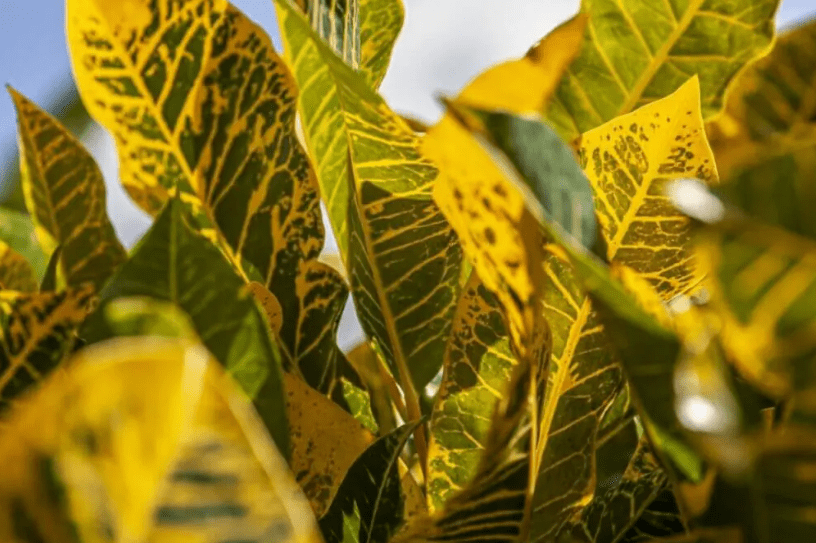
Troubleshooting common issues (leaf drop, yellowing leaves)
If you notice leaf drop or yellowing leaves on your plants, it’s important to act quickly to identify the cause and address the issue. These common problems can be caused by a variety of factors, including overwatering, underwatering, nutrient deficiencies, or pests. The first step is to carefully examine your plants and their environment to determine the root cause of the issue. Once you have identified the problem, take proactive steps to address it. Adjust your watering schedule, provide the necessary nutrients, and treat any pests that may be causing damage. By taking a hands-on approach to troubleshooting these issues, you can help your plants thrive and ensure their continued health and vitality. Don’t let common problems derail your plant care efforts – take action and get to the root of the issue to keep your plants in top condition.
Propagation of Croton Plants
Can be a rewarding and enjoyable experience. Whether you’re a seasoned gardener or new to plant care, propagating Croton plants is a great way to expand your collection and share the beauty of these vibrant, colorful plants with others. There are several methods of propagation to choose from, including stem cuttings and air layering. Whichever method you choose, the key is to provide the right conditions for your cuttings to take root and thrive. With a little patience and care, you can successfully propagate Croton plants and enjoy watching them grow into healthy, mature plants. Plus, sharing your propagated plants with friends and family is a wonderful way to spread the joy of gardening and introduce others to the beauty of Croton plants. So don’t be afraid to take on the challenge of propagation – it’s a fantastic way to grow your plant collection and share the love of gardening with others.

Seasonal Care for Croton Plants
Croton plants are beautiful and vibrant, but they require specific care throughout the year to ensure they thrive. In the spring and summer, it’s important to keep your Croton plant care in a warm and humid environment. Make sure to water it regularly and provide it with plenty of sunlight. However, in the fall and winter, you’ll need to adjust your care routine. During these cooler months, you should reduce the amount of water and provide your plant with a bit less sunlight. This will help mimic the plant’s natural environment and allow it to go into a dormant phase. It’s important to stay attentive to the changing seasons and adjust your care routine accordingly to ensure your Croton plant care remains healthy and vibrant throughout the year. By taking on the challenge of seasonal care for your Croton plant, you’ll be rewarded with a beautiful and thriving plant that brings joy to your home. So don’t be afraid to set goals for the seasonal care of your Croton plants and work hard to achieve them – your efforts will be well worth it in the end.
In conclusion, caring for your croton plant doesn’t have to be complicated. With the right knowledge and a little bit of effort, you can easily keep your plant thriving and looking beautiful. Remember to provide it with the right amount of sunlight, water it regularly, and keep an eye out for any pests or diseases. With this ultimate guide, you’ll have all the information you need to become a successful croton plant care parent. So, roll up your sleeves and get ready to enjoy the beauty of your flourishing croton plant!
Frequently asked questions And Answer
Croton plants thrive in bright, indirect light. It’s best to place them near a window where they can get plenty of sunlight without being directly exposed to harsh rays.
Croton plants prefer to be kept consistently moist, but not overly wet. Water your croton when the top inch of soil feels dry to the touch, usually about once a week.
Croton plants prefer warm temperatures between 60-85°F (15-29°C). They are sensitive to cold drafts and should be kept away from drafty windows or doors.
Fertilize your croton plant every 2-4 weeks during the growing season (spring and summer) with a balanced, water-soluble fertilizer. Be sure to follow the instructions on the fertilizer package for the correct dilution and application.
Dropping leaves can be a sign of stress, usually caused by changes in temperature, light, or watering. Try to maintain a consistent environment for your croton plant and make sure it’s not being overwatered or exposed to cold drafts.
Yes, croton plants can be propagated through stem cuttings. Simply take a 4-6 inch cutting from a healthy, mature stem and place it in a pot with well-draining soil. Keep the soil consistently moist and provide bright, indirect light for the cutting to root.
Yes, croton plants are toxic to pets if ingested. It’s important to keep them out of reach of curious pets and to seek immediate veterinary attention if you suspect your pet has ingested any part of the plant.
Croton plants are susceptible to pests such as mealybugs, spider mites, and scale insects. They can also be prone to fungal diseases if overwatered. Regularly inspect your plant for any signs of pests or disease and treat them promptly with the appropriate insecticide or fungicide.
